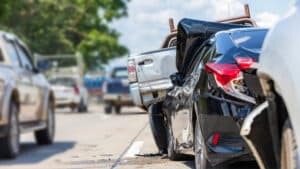Article provided by The Dolan Law Firm
Recently in the news there has been a rash of public transportation accidents that have resulted in severe injuries and even death to passengers. In July, the operator of a MUNI light rail train in San Francisco blacked out at the controls and crashed into another train, injuring 47 people. Earlier this year in February, a BART train in Oakland sideswiped another train. Seven people were harmed in this accident.
When a passenger is hurt while using public transportation, the public transportation provider may be held legally responsible for the passenger’s injuries. Under the law, public transportation providers like city and state-operated trains, buses and light rail systems, are referred to as “common carriers.”
Common Carriers Owe a Higher Duty of Care
In general, common carriers refer to those who are in the business of transporting property or people for the general public. Types of common carriers include:
- City buses
- Airlines
- Taxis
- Elevators, escalators and moving walkways
- Ski lifts
Privately-owned transportation companies are also considered common carriers if they transport persons for hire. This includes private charter buses and tour bus services.
Civ. Code § 2103 states:
A Carrier of persons for reward must give passengers all such accommodations as are usual and reasonable, and must treat them with civility and give them a reasonable degree of attention.
Likewise, under Civ. Code § 2103, equipment must also be safe and fit for its intended purpose.
Under California law, common carriers are held to a higher standard of care than other transportation services or even other drivers. Civil Code §2100 states that common carriers “must use the utmost care and diligence for [passengers’] safe carriage, must provide everything necessary for that purpose, and must exercise to that end a reasonable degree of skill.”
As part of this heightened standard of care, common carriers owe many duties to their passengers, including:
- The duty to safely transport passengers to their destinations
- The duty to provide a safe place for passengers to enter and exit the vehicle
- The duty to take reasonable steps to protect passengers from harm, including harm by other passengers
- The duty to provide safe vehicles and maintain the safety of those vehicles
- The duty to hire qualified employees and properly train those employees
The duties common carriers owe to their passengers may begin before the passenger ever steps foot on the bus, plane or other mode of transportation. So long as the common carrier has accepted a person as a passenger and the passenger has placed himself or herself in the carrier’s care, then the common carrier has a duty to take every reasonable step to ensure the safety of the passenger. Furthermore, the carrier’s duties do not automatically end once a passenger leaves the vehicle. The common carrier must take the passenger to his or her intended destination and leave the passenger in a safe place.
When a common carrier fails to uphold its duties to its passengers are injured as a result, the common carrier can be held legally liable for these injuries.
Common Carrier Accidents
Despite these higher standards, there are still an alarming number of accidents involving common carriers not just in California, but across the country. Why do these accidents occur?
Common carrier accidents may happen for many different reasons, including:
- Poor driver training
- Inadequate discipline of reckless drivers
- Driver fatigue
- Improperly maintained and decaying equipment
- Improperly maintained infrastructure
Most common carrier accidents relate to driver negligence, operator negligence or poor equipment maintenance.
Common carriers are responsible for the actions of their employees. Under the law, employees are agents of the common carrier and the business may be held liable for the negligence of its agents. Common carriers are required to properly train their employees and supervise their work. This includes properly disciplining or terminating drivers and operators who do not perform their work responsibly.
Common carriers also have a duty to maintain the safety of their equipment and vehicles. This means regularly inspecting the vehicles, performing routine maintenance and making necessary repairs. The equipment also must be up to current safety standards. Common carriers are liable when a known defect or a defect they should have known about results in injury to passengers.
Conclusion
Those who own and operate public transportation services are held to the highest level of care under California law. When these common carriers fail to uphold their legal duties and a passenger is hurt as a result, the injured person is entitled to compensation for those injuries. For more information on common carrier liability and public transportation accidents, contact an experienced attorney.











